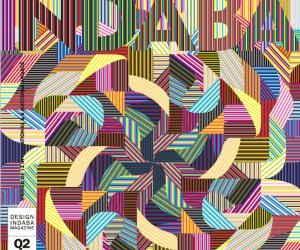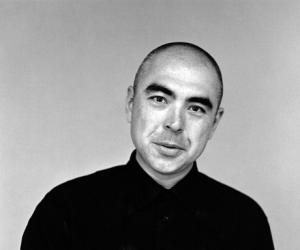First Published in
As I sat in the luxurious settings of the Blue Train, gliding through the winelands of Cape Town sipping on my rose-coloured, raspberry-flavoured Vitamin Water, I kept asking myself: How should I approach him? What should I say to him?
“Him” being Dai Fujiwara, of course, creative director of the international Issey Miyake fashion house –need I say more? “Me” being a fashion designer from a corner in South Africa, doing post-graduate research into Japanese fashion and anti-fashion.
From the time I heard that Fujiwara was confirmed as a guest speaker at Design Indaba 2009, I could not contain my excitement at meeting one of the true pioneers of contemporary fashion. And now, here I was at the opening of the Design Indaba.
It was as if fate had intervened to provide me with a tremendous opportunity to pick the brain of a master designer who also happens to be a focus of my research. The heavens had surely opened up, the light shone on me and I could hear the celestial music playing in the background. But an hour had gone by already and I kept pacing up and down, peeking at him from every corner of the train hoping to make eye contact.
The nervous energy, the butterflies in my stomach and fear of rejection mounted as I circled through the illustrious gathering of designers from around the world. All to be dispelled, the moment he smiled at my greeting. Fujiwara’s humility and approachability immediately gave me a sense of comfort akin to talking to a friend, rather than a celebrated international designer. His modesty and willingness to share information astounded me, and the overwhelming anticipation I had felt subsided as we began chatting about culture, food, fashion, design and how design education needs to be approached differently.
Fujiwara lives and breathes creativity through minimalism, and this approach to his life and work fuels him. He is constantly looking at new and innovative ideas to create simple, yet effective designs. As the fabulous evening on the train drew to a close, a key theme emerged that, as designers, we need to go back to the basics: using natural colours; being inspired by nature; and staying away from razzle-and-dazzle creations that serve only to add drama.
Over the next few days, I became a part of the Fujiwara entourage, listening to his various interviews and chipping in with my ideas and thoughts. My fascination with him grew as he explained how his designs were conceptualised. He laughed as he recalled a field trip to the Amazon on a “colour hunting” expedition with his interns. In order not to damage the flora and fauna in the region, instead his interns were forced to match the 3 000 swatches they carried with them to the surrounding colours of nature, for his Amazon-inspired design collection.
Another example he shared was a challenge that he presented to his interns around finding different ways to peel an orange. Each intern devised a new method – whether spiralling the peel, ripping sections or merely peeling in segments. Each interpretation of this seemingly mundane task of peeling an orange gave rise to a new design. It is this simplicity that we as young designers need to incorporate in our design collections.
He also described the conceptualisation of another line of clothing for Issey Miyake, which was inspired by Karate Kata and sees to the needs of Japanese men wanting simple and practical suits that allow them to dress quickly, with no fuss, yet still look sharp.
As our discussions turned to A-Poc – A Piece of Cloth – I noticed that Fujiwara was wearing a jersey based on this design philosophy. The jersey was simple and stylish yet contained a rough edginess with its raw sleeves and neckline. Made from a single piece of cloth, this simple concept allows the wearer to customise the clothing by cutting desired sleeve and dress lengths. It is not gimmicky, but pure genius: This revolutionary style of clothing design not only provides a distinctive style, but also addresses the various global issues around wastage of fabrics, reduced electricity to produce garments and eliminating the need for child labour, which is becoming more prevalent in the fashion industry. Design that benefits the world – so noble, I pondered.
When asked to describe the Issey Miyake brand, Fujiwara replied: “Strong, simple and confident… Design is about creating a second skin.”
As Design Indaba drew to a close and my time as Fujiwara’s groupie came to an end, I could not help but feel that I had barely scratched the surface of the essence of design. Although he had answered all my questions, he left with me with a million more, each provoking new thoughts and ideas. It is this quality of his that most intrigued me and left me inspired to approach design from new perspectives.

















